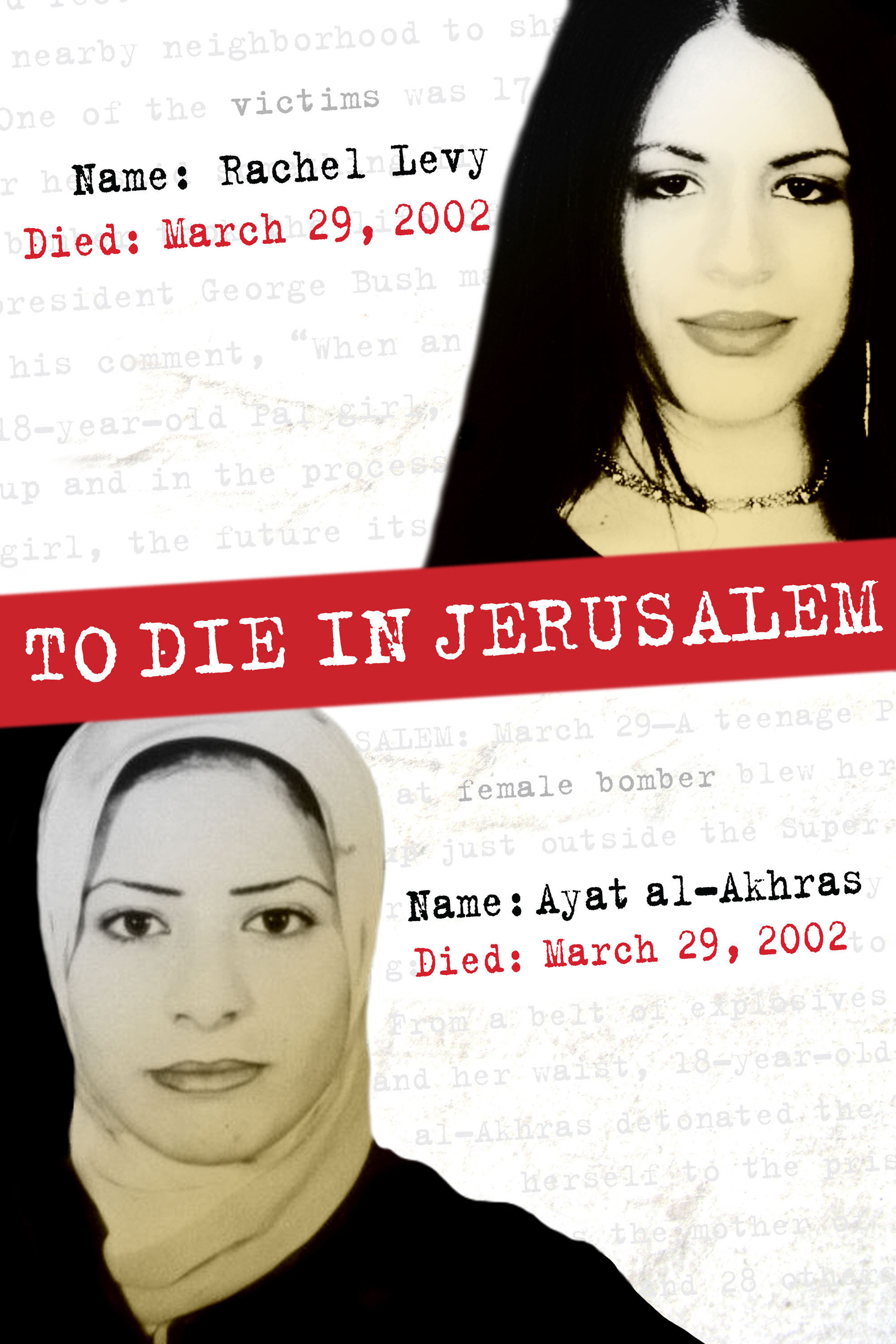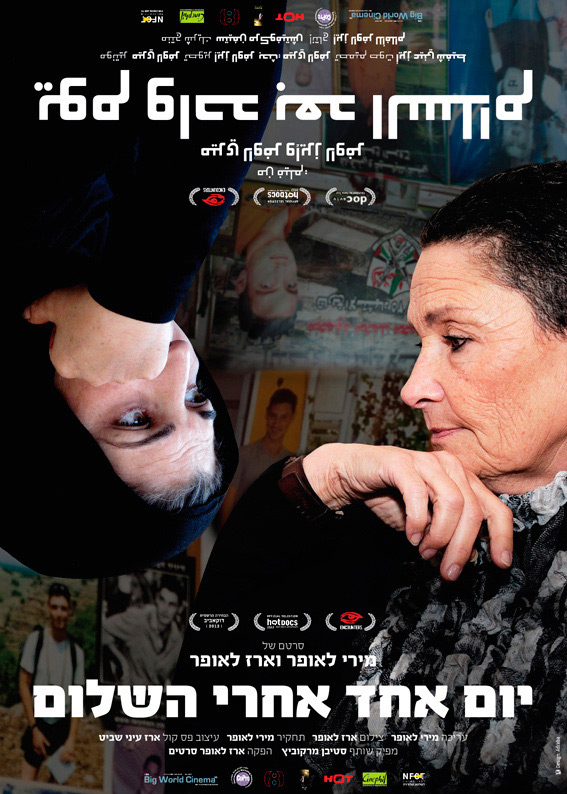Two powerful, wrenching documentary films, To Die in Jerusalem (dir. Hilla Medalia, 2007; produced for HBO) and One Day After Peace (dirs. Miri Laufer and Erez Laufer, 2012) feature bereaved Israeli mothers on a quest to find answers and ultimately, closure. To Die in Jerusalem follows Abigail Levy, the mother of Rachel Levy, 17, who was killed in a 2002 bombing in a Jerusalem suburb. Rachel's killer, Ayat al-Akhras, was an 18-year-old resident of the Deheisheh refugee camp in Jerusalem. Their proximity in age and close physical resemblance provoked an international media response picturing them as "could-have-been" friends or sisters. In the film, Levy pursues a meeting with Ayat al-Akhras's parents, seeking an explanation as well as a public repudiation of their daughter's act. Over a period of several years, the journey takes her to an Israeli prison for Arab women, to an aborted attempt to visit the al-Akhras family in Deheisheh, and finally to a meeting held remotely over satellite television. As viewers might predict, the long-sought encounter does not provide Levy with the answers she seeks. Rather, it graphically portrays the inevitable failure of a dialogue premised on a one-sided framework of expectations and mediation. Although Levy calls the shots through much of the film, when the conversation takes unexpected turns, she finds herself floundering. Ultimately she declares the dialogue a failure and walks off the set.
By contrast, One Day After Peace depicts the powerful and transformative possibilities of a genuinely open dialogue between perpetrators and victims, through conversations that do not seek a priori confirmation of the initiator's own beliefs. In this intensely moving film, Robi Damelin, who left her native South Africa during the apartheid era for Israel, grapples with a path forward following the death of her son David, who was shot and killed by a Palestinian sniper (Tha'ir Hammad) in the course of reserve military duty in the West Bank. Damelin becomes a leader in a joint Israeli-Palestinian organization of bereaved parents, attempts to initiate dialogue with Hammad, and returns to South Africa to conduct multiple interviews with both perpetrators and victims who took part in the Truth and Reconciliation Committee. The South African sections of the film show how the transformative power of confrontation, truth telling, and forgiveness can set a nation emerging from violent conflict on a different course. The question that lingers is whether such an approach will ever be possible or feasible for Palestinians and Israelis.
Implicitly, both films dwell on questions of motherhood and bereavement as sites of connection that may transcend conflict and difference. In both films, mothers from all sides of both conflicts embrace this notion, but the various conversations in To Die in Jerusalem ultimately subordinate these "universals" to the harsh reality of political incommensurability, whereas One Day After Peace accepts incommensurability as a starting point and works forward to from there to seek out points of connection. Both films are also explorations of the roles of revenge and forgiveness in responding to the murder of loved ones. They ask us, the viewers, to reconsider our own assumptions concerning notions of victimhood, of terror, and of forgiveness. Through them we see the contingency of the roles of perpetrator and victim in competing historical narratives; we witness how questions of state violence, terror, and resistance are leveled and refuted by different parties in a conflict. These are not easy films to watch, but they are important glimpses into the experiences of human beings in long-term violent conflicts and into the efforts of ordinary people who have undergone the most unimaginable of losses to find socially meaningful responses to their pain.


